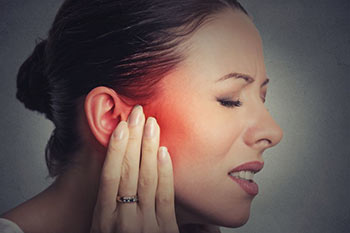Why Do I Have Earwax?

Earwax or “cerumen” (si-ROO-men) is a normal substance made by our bodies to clean, protect, and “oil” our ears. It acts as a self-cleaning agent to keep our ears healthy. Dirt, dust, and other small pieces of stuff stick to the earwax which keeps it from getting farther into the ear. Chewing, jaw motion, and growing skin in the ear canal help to move old earwax from inside our ears to the ear opening, where it then flakes off or is washed off when we bathe. This normal process of making wax and pushing the old wax out continues nonstop.
Cerumen is formed in the outer two-thirds of the ear canal and not the inner-third that ends at the eardrum. Impacted earwax (brownish mass) can completely obstruct the ear canal.
What Does It Mean if My Earwax Is Impacted?
At times, your ear’s self-cleaning process might not work very well and may lead to a buildup of earwax. When this happens, earwax can collect and block or partly block your ear canal. This is impaction. Impacted earwax can cause symptoms like hearing loss, itching, or ear pain. The impaction also makes it hard for your health care provider to see in your ears. You can have symptoms when your ear canal is completely blocked by earwax or only partly blocked.
The Symptoms of Earwax Impaction:
- Ear pain
- Itching
- Feeling of fullness in the ear
- Ringing in the ear (tinnitus)
- Hearing loss
- Discharge coming from the ear
- Odor coming from the ear
- Cough
- Change in hearing aid function
You should see your health care provider if you have symptoms and you are not sure if they are caused by earwax. You might have a different ear problem that needs medical care.
Who Is More Likely to Get Earwax Impaction? It can happen to anyone, but is more common in the following…
○ Elderly people
○ People who use hearing aids or earplugs
How Is It Treated? Earwax impaction is diagnosed through a physical examination and review of your medical history. Your health care provider may look in your ear canal with a tool called an otoscope (OH-t-OH-scope) or other device to see if you have impacted earwax. If you do, you may be treated for the impaction at that time or you may be sent to another provider for treatment.
Impacted earwax can be treated in several ways. Some of the treatments can be done at home, but you may have certain medical or ear conditions that could make home options unsafe. You and your health care provider should discuss possible treatments and decide on the best treatment for you. Figure 2 may help with your discussion.5 Available treatments are:
Watchful waiting, or observation for a period of time. Earwax removal by the body is a natural process, and many impactions clear on their own. Your health care provider might offer the option to wait and see if the problem goes away or gets worse over time.
Irrigation, or ear syringing. This involves clearing the wax out of the ear canal by a stream of warm water. Self-irrigation can be done at home. Irrigation is not recommended for patients who get a lot of ear infections, have ear tubes, or have a hole in the eardrum. Home use of oral jet irrigators is not effective and is not recommended as they can lead to damage in the ear.
Wax softening agents (cerumenolytics). These are ear drops that soften or break up the wax to help in removal. These solutions can be used alone or together with irrigation or physical removal by a provider.
Physical removal of wax with special instruments or a suction device. Physical removal of earwax should only be performed by a health care provider or your ENT-Specialist.
